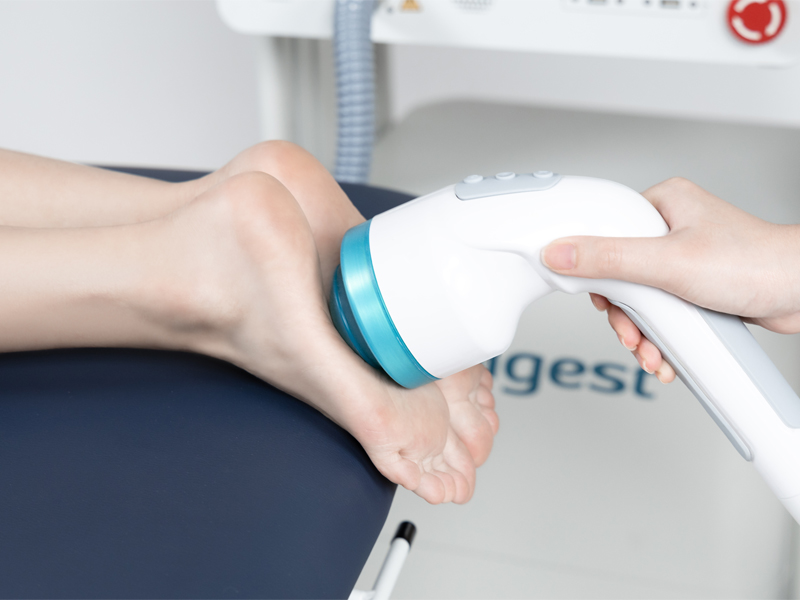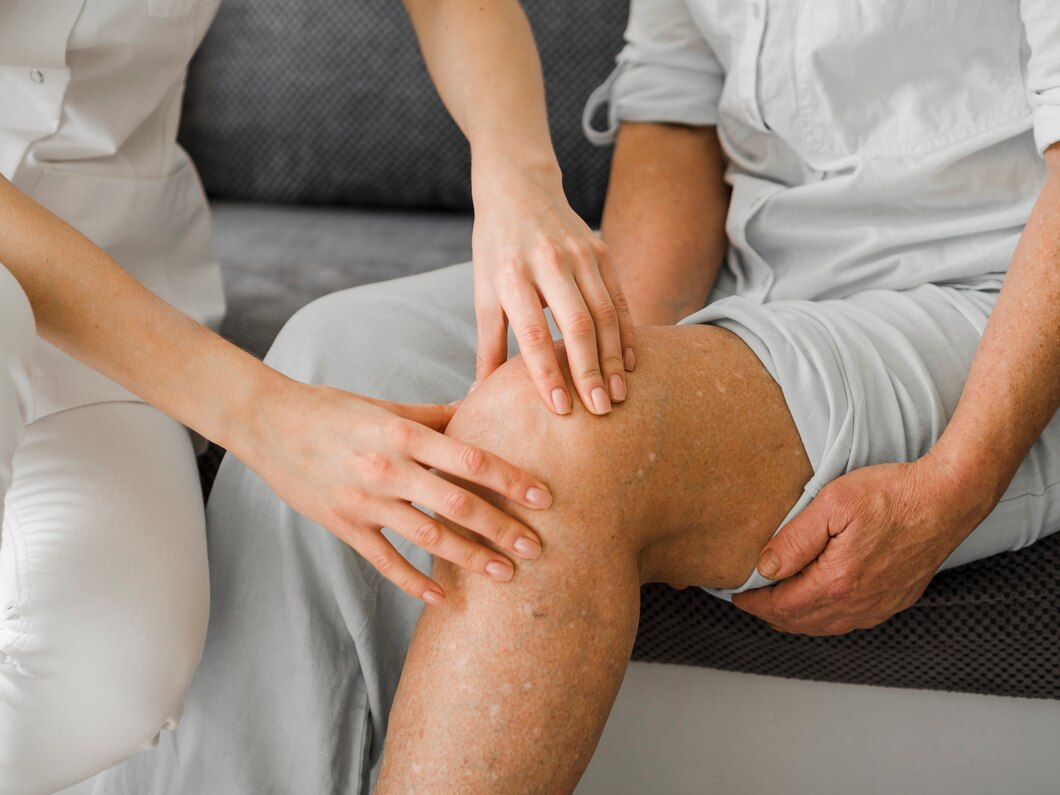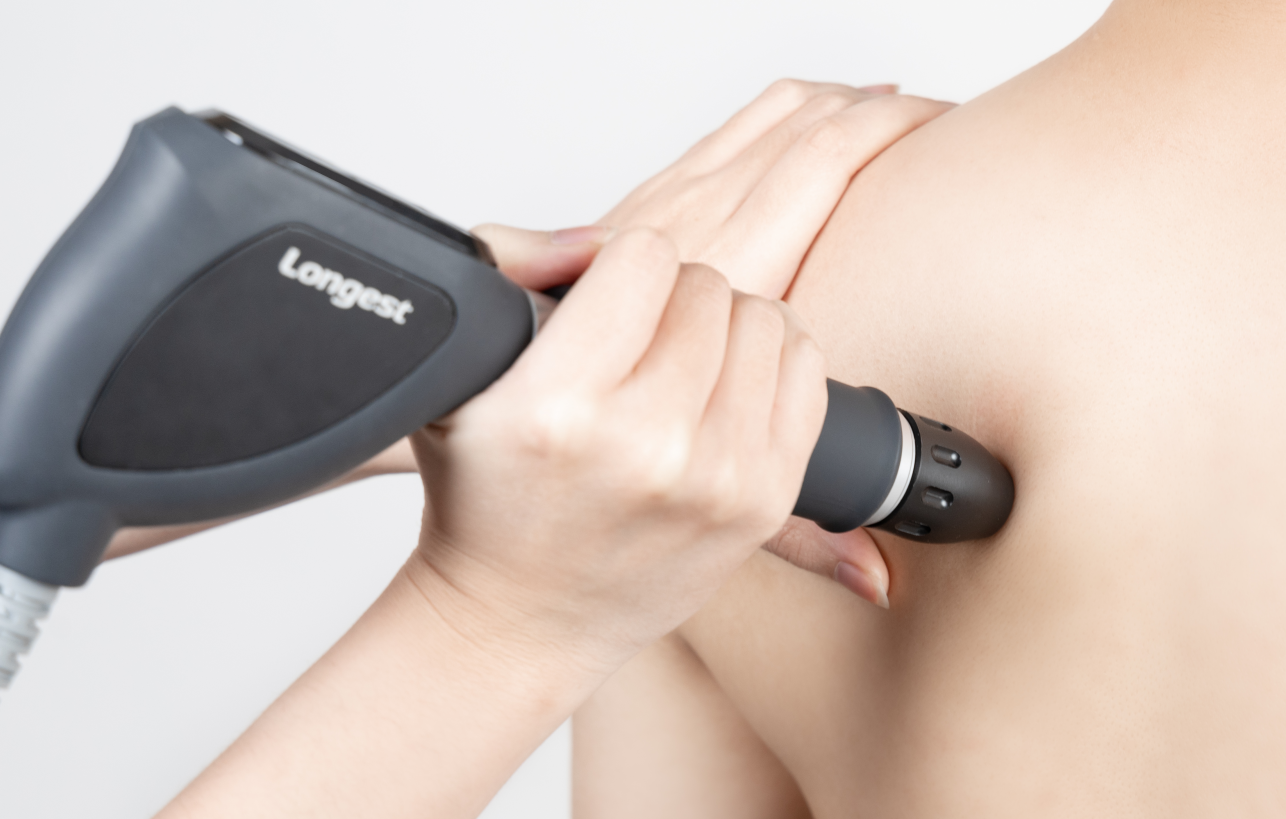Extracorporeal Shock Wave Therapy (ESWT) equipment has emerged as a transformative non-invasive solution in global healthcare, revolutionizing rehabilitation and orthopedic treatments by eliminating the need for invasive surgery. As chronic diseases like orthopedic disorders and chronic pain rise worldwide, coupled with growing clinical preference for safe, effective non-invasive therapies, the ESWT market is entering a phase of robust growth. This article delves into ESWT’s core technologies, diverse applications, global market dynamics—including size, competition, and regional trends—and future trajectories, offering a holistic view of how this equipment is shaping the future of patient-centric, minimally invasive care.

Extracorporeal Shock Wave Therapy (ESWT) equipment is a core non-invasive physical therapy device in the medical field, widely used especially in rehabilitation therapy. Its key advantage lies in achieving treatment through the biological effects of extracorporeal shock waves without the need for surgery. The core principle is to generate shock waves by releasing energy through vibration, high-speed movement, or compressed media. When acting on the human body, it mainly takes effect through three key mechanisms:
Osteogenic effect: Relieves soft tissue adhesions, promotes blood vessel growth, and accelerates bone healing.
- Cavitation effect: Unblocks occluded capillaries and improves local blood circulation.
- Analgesic effect: Reduces nerve sensitivity and inhibits the transmission of pain signals to relieve discomfort.
Mainstream ESWT equipment is categorized into three types, each with clear application scenarios:
Electromagnetic type: Drives a metal membrane to vibrate and focus shock waves via a magnetic field, suitable for treating tendinitis and Achilles tendinitis.
- Piezoelectric type: Relies on piezoelectric crystals to automatically focus energy, delivering significant pain relief effects for frozen shoulder and lateral epicondylitis (tennis elbow).
- Pneumatic ballistic type: Uses compressed gas to drive pulsed shock waves, with outstanding efficacy in treating myofascial trigger points and soft tissue injuries.
-

ESWT equipment has a wide range of applications:
Orthopedics: Commonly used for treating chronic diseases of tendons, ligaments, joint capsules, and muscles, such as frozen shoulder, lateral epicondylitis (tennis elbow), plantar fasciitis, and Achilles tendinitis. It is also applicable to bone tissue conditions like osteoarthritis, delayed fracture union, and non-union.
- Rehabilitation medicine: It has a certain therapeutic effect on muscle spasticity in hemiplegic patients.
- Andrology: Exploratory applications are being conducted for conditions such as erectile dysfunction.
-
-

-
-
In 2025, the global extracorporeal shock wave therapy (ESWT) equipment market reached a crucial development milestone, with its market size exceeding RMB 1.1 billion. According to in-depth research and analysis by Wenkh, this non-invasive medical device sector is showing strong growth momentum. It is projected that the market will expand continuously at a compound annual growth rate (CAGR) of 9.78% over the next 7 years, and by 2032, the market size is expected to double to RMB 2.2 billion.
Behind this growth are two key drivers:
- The rising incidence of diseases such as orthopedic disorders, chronic pain, and urinary calculi.
- The increasing clinical acceptance of non-invasive treatment methods. Leveraging its advantages of clear efficacy and relatively few side effects, ESWT is gradually penetrating more medical scenarios.
-
-
The global ESWT equipment market exhibits the characteristics of "high concentration and multi-party competition." Currently, the main market players include outstanding brands such as Chattanooga (DJO), BTL Corporate, Storz Medical, EMS DolorClast, and
Longest Medical. These enterprises have formed differentiated competition in various market segments based on their respective technological advantages and brand accumulation. Below is a brief introduction to representative companies in the ESWT equipment market:
-
-

Chattanooga is a brand under DJO Global (USA) and ranks among the world’s top-selling rehabilitation equipment brands. Founded in 1947, it is headquartered in Chattanooga, Tennessee. Its product portfolio covers ESWT equipment,
electrotherapy devices, traction systems, and sports rehabilitation systems, and it is renowned for its dual-line layout of "desktop + portable" products. The brand’s products are sold in over 80 countries. Relying on FDA/CE certifications, continuous clinical innovation, and a direct sales-distribution network covering North America, Europe, and the Asia-Pacific region, Chattanooga maintains a leading market share in sports medicine departments, rehabilitation departments, and private chain clinics.
-
-

Founded in 1993 and headquartered in Hertfordshire, UK, BTL Corporate is a multinational equipment manufacturer focusing on three major fields: rehabilitation therapy, cardiopulmonary monitoring, and medical aesthetics. The company has more than 400 R&D engineers and over 3,800 employees, with direct sales subsidiaries established in 85 countries. All its products have obtained ISO 13485, FDA, CE, and Health Canada certifications. Its shock wave systems,
electrotherapy devices, cardiopulmonary Holter monitors, and non-invasive body shaping and skin tightening systems have been installed in over 50,000 medical institutions worldwide. In 2024, its revenue exceeded USD 500 million, solidifying its position in the first echelon of European rehabilitation equipment manufacturers.
-
-

Established in 1987 and headquartered in Tägerwilen, Switzerland, Storz Medical AG is an independent partner company of the German KARL STORZ Group. The company specializes in high-end extracorporeal shock wave and magnetotransduction technologies, with products covering six fields: urology, orthopedics, rehabilitation, cardiology, dermatology, and veterinary medicine. Its MASTERPULS and MAGNETOLITH series are known for high energy output, precise positioning, and image navigation, with over 10,000 units installed globally. Storz Medical maintains long-term cooperation with top hospitals and academic centers in Europe, North America, and the Asia-Pacific region.
-
-

Founded in 1983 and based in Neuchâtel, Switzerland, EMS Electro Medical Systems is the original inventor of radial shock wave therapy. Its flagship brand, DolorClast, is characterized by high-frequency pulses of up to 25 Hz, constant energy output, and an ultra-portable design weighing only 15 kg, covering indications such as orthopedic pain, sports injuries, and urinary lithotripsy. The company has established direct operations in more than 90 countries, with over 20,000 units installed worldwide. It has obtained FDA, CE, and ISO 13485 certifications, and is praised as a model of "Swiss precision manufacturing + evidence-based medicine".
-
-

Founded in 2000, Longest Medical is the first listed company in China’s rehabilitation therapy industry. It focuses on non-invasive rehabilitation and medical aesthetic equipment such as shock wave devices, electrotherapy instruments,
ultrasound equipment, pneumatic therapy devices, and sports training equipment. The company currently has over 700 employees, including more than 70 R&D engineers, and has accumulated 214 patents. Adhering strictly to international and industry quality standards, it has obtained ISO 9001 and ISO 13485 certifications. Its products have also received authoritative certifications such as CE, FDA, and Health Canada, and are exported to more than 80 countries. Leveraging the advantage of products with both high quality and cost-effectiveness, Longest Medical can accurately meet the needs of a broader range of primary medical institutions and patients.
-
-

The global ESWT equipment market presents a distinct "multi-level development" feature. Due to differences in the maturity of medical systems, the popularity of rehabilitation awareness, and technological innovation capabilities, different regions have formed unique market patterns:
-
-
As the world’s most mature ESWT market, North America has a highly developed medical system and a strong culture of sports rehabilitation. This has driven the wide application of ESWT equipment in orthopedics, urology, sports medicine, and other fields. The market is dominated by high-end equipment, with a mature R&D-clinical collaboration system and a stable pace of equipment renewal.
-
-
The European market focuses on chronic pain management and functional rehabilitation. As the birthplace of ESWT technology, Europe has strict requirements for the technical precision and parameter control of ESWT equipment. The EU’s rigorous medical device certification system has forced local enterprises to continuously optimize product safety and innovation. Meanwhile, the business model of "equipment leasing + clinic cooperation" is widely adopted locally, further lowering the procurement threshold for small and medium-sized medical institutions.
-
-
The Asia-Pacific region is currently the fastest-growing ESWT market globally, with China, Japan, and South Korea serving as the core growth engines:
China: Benefiting from the rapid development of rehabilitation medicine and policy support for localization, local enterprises have gained a certain advantage in the mid-to-low-end market, while demand for high-end equipment is gradually increasing.
- Japan and South Korea: With solid technological foundations, these two countries focus on the R&D of miniaturized ESWT equipment with user-friendly interfaces, targeting the high-end market.
- India and Southeast Asia: These regions are in the market popularization stage, with a high proportion of imported equipment and strong price sensitivity. Future growth potential will be concentrated in primary healthcare and basic rehabilitation fields.
-
The market in the Middle East and Africa is still in the initial development stage. Only resource-rich countries such as the United Arab Emirates and Saudi Arabia hav
-
e introduced high-performance ESWT equipment in the construction of high-end medical infrastructure, mainly for private hospitals and high-end rehabilitation centers.
-
-
Rehabilitation therapy demand in Latin America is gradually emerging, but limited medical expenditure has restricted market development. The market has a high degree of dependence on imports, and price and after-sales service have become key factors for enterprises to compete in this region.
-
-

The
extracorporeal shock wave therapy (ESWT) equipment market is standing at a new starting point full of opportunities. Driven by the global aging population, the rising incidence of chronic pain and sports injuries, and the growing clinical demand for non-invasive, efficient treatment methods, ESWT technology is gradually expanding from traditional orthopedics and rehabilitation to fields such as andrology, urology, and even medical aesthetics, with its application boundaries continuously broadening.
In the future, market competition will not only focus on equipment performance and brand influence but also on the integration capabilities of intelligent, portable, and personalized treatment solutions. Innovative directions such as AI-assisted positioning, precise energy regulation, and the development of home-use equipment will become the key for enterprises to build core competitiveness. Meanwhile, in emerging markets, especially in the Asia-Pacific region, the rise of local enterprises and policy support will further promote market expansion and technology penetration to grassroots levels.
In conclusion, ESWT equipment not only represents the development direction of modern rehabilitation medicine but also reflects the general trend of the global medical system transitioning to a minimally invasive, efficient, and patient-friendly treatment model. Driven by both technological iteration and clinical demand, the ESWT market is expected to maintain steady and rapid growth, providing more patients with higher-quality and more accessible rehabilitation treatment options, and truly realizing the medical vision of "non-invasive treatment, high-quality rehabilitation".
(The data and industry insights in this article are sourced from Wenkh’s Global and China Extracorporeal Shock Wave Therapy (ESWT) Equipment Market Size, Competitive Landscape, and Industrial Chain Research Report 2025. For further in-depth analysis, please refer to the full version of the report.)

























LongestMedical
LongestGloba
longest
guangzhou_longest
GzLongest